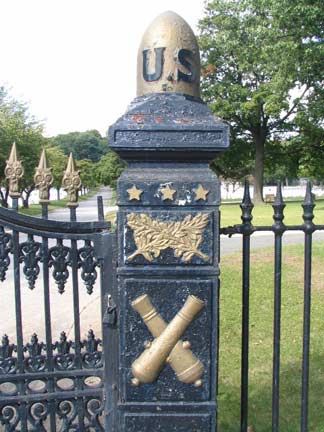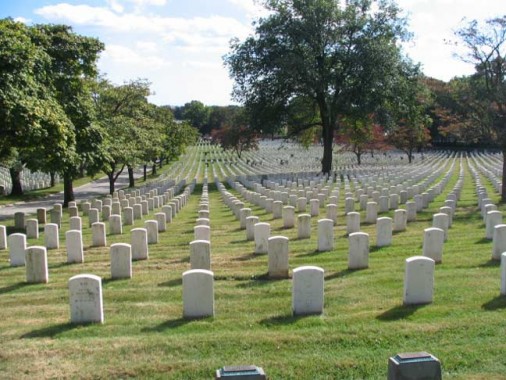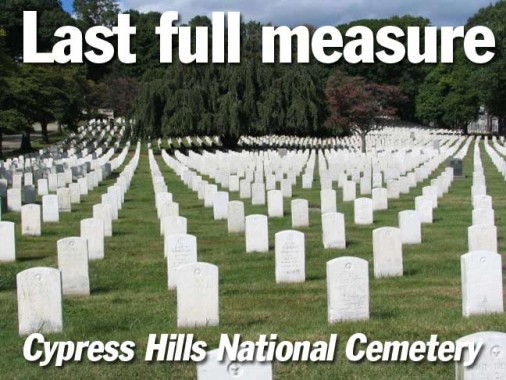There are a total of seventeen cemeteries in Cypress Hills on either side of the Brooklyn-Queens border. It’s a hilly area, where thousands of years ago a glacier was stopped cold, depositing debris in its advance, accounting for the hills of Staten Island and the middle of Brooklyn, Queens and on into Long Island. I’ve chosen to feature National Cemetery at Jamaica Avenue and Hale Street on Memorial Day, since each and every one of its over 21,000 stones bears the cross that appears on the gravestone of a military veteran.


The National Cemetery network was established during the Civil War. On July 17, 1862, Congress enacted legislation that authorized the President to purchase “cemetery grounds” to be used as national cemeteries “for soldiers who shall have died in the service of the country.” The cemeteries were soon to do a good business. In that first year, a National Cemetery established in Sharpsburg, Maryland became the final resting place for 4, 476 Union soldiers killed at the Battle of Antietam, September 17, 1862, the bloodiest day in US history. Today the National Cemetery network consists of 136 cemeteries, 120 administered by the US Department of Veterans Affairs.

Cypress Hills National Cemetery is one of the original fourteen National Cemeteries. Its site had already been established before its national designation, as part of the larger Cypress Hills Cemetery. Additional land was acquired in 1882 with the aid of Secretary of War Robert Todd Lincoln (son of the President) as well as 1941, when its Mount of Victory and Union plots, in Cypress Hills Cemetery proper, north of National Cemetery, were donated by New York State. The Mount of Victory plot is the final resting place of the last surviving veteran of the war of 1812, Hiram Cronk, who died in 1905 at age 105.
Over 7,000 Civil War veterans, Union and Confederate, are buried at Cypress Hills National. Only the Gettysburg and Arlington Cemeteries contain more Civil War veterans killed at Gettysburg than does Cypress Hills National. Private Alfred Mitchell was the first Union interment. 22 Medal of Honor awardees, marked by gold-lettered, marble headstones, are here. The Medal of Honor is the highest award for valor in action given to a member of the armed services; it is generally given personally by the President.
Three members of the 7th US Calvary who survived the battle of Little Big Horn, June 25, 1876, are interred at Cypress Hills National, including Italian-born bugler John Martin (Giovanni Martini) who had served in his youth under Giuseppe Garibaldi for Italian independence. Martin served in the miltary for 30 years, 1874-1904, and later served at the 103rd Street IRT subway station taking tickets in the days before tokens. He passed away in 1922.
Nine other countries, Argentina, Brazil, Canada, France, Italy, Poland, Russia, Spain and the U.K., claim interments in the Cemetery, including 25 French sailors who died while on duty in American waters in WWI, and British Revolutionary soldiers whose remains were transferred to Cypress Hills National in 1909, the earliest war dead in the Cemetery.
Cypress Hills National Cemetery [US Dept. of Veterans Affairs]
5/26/12
